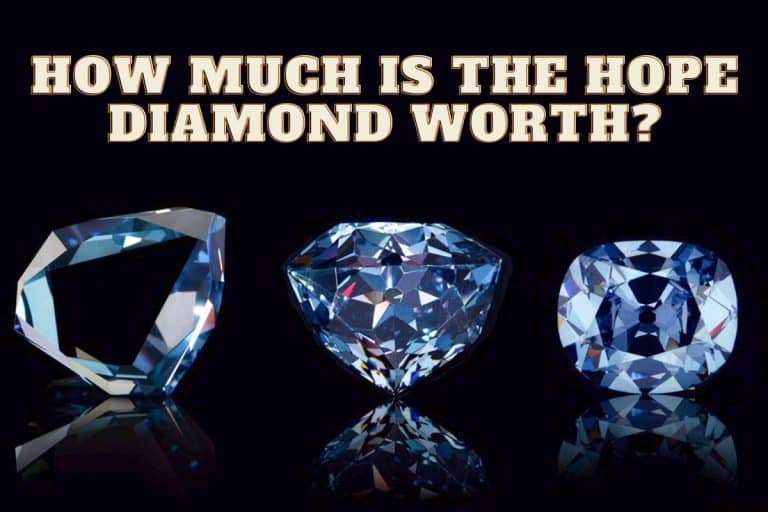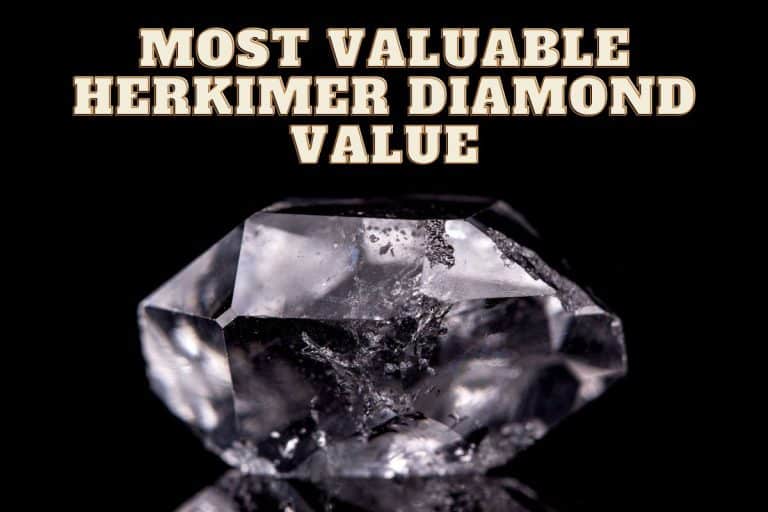If you're in the market for a 1/10-carat diamond, you've come to the right place. Many people are curious about the value of this small but sparkling gemstone. In this guide, we'll explain what factors affect the price of a 1/10-carat diamond and the importance of diamond certification. Whether you're looking for a gift, an engagement ring, or a personal treat, we'll tell you everything you need to know.
Diamonds are a girl's best friend, or so they say. But why do we associate these shiny rocks with wealth and romance? It is because diamonds are very rare and are perceived to be highly valuable.
Therefore, we believe nothing says “I love you” and “I'm here for you” like a sparkling diamond ring. Movies have also played a role in romanticizing the proposal with a diamond ring, showing us scenes of handsome men kneeling and popping the question with a sparkling jewel.
But aside from their prominence in jewelry, diamonds are used in industrial applications as abrasives, cutting tools, drill bits, heat sinks, optical components, and semiconductors. Diamonds can also conduct electricity and heat very well.
How Big is a 0.1-carat Diamond?
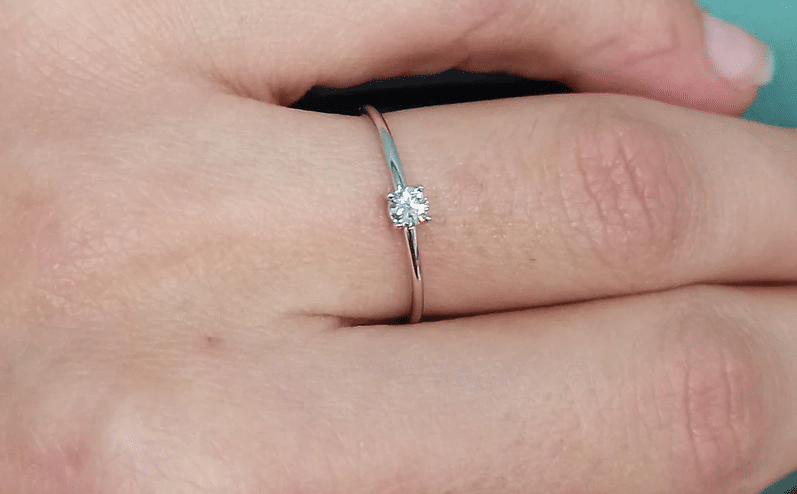
A 1/10-carat diamond weighs 0.1 carat, equivalent to 20 milligrams or 0.0007 ounces. A carat is the unit of mass used to measure other minerals such as gold, gemstones, and pearls. One carat is equal to 200 milligrams or 0.007 ounces.
A diamond's carat weight is one factor that determines its value, along with its color, clarity and cut. A 1/10-carat diamond is considered a small diamond, and it may be used as an accent stone in jewelry or as a center stone in a delicate ring or pendant.
Factors Determining the Value of a Diamond
Weight
The weight is the most obvious determinant of the value of a diamond, and it is measured in carats. Generally, the larger the diamond, the more valuable it is because larger diamonds are rarer and more desirable.
The largest diamond ever, The Cullinan Diamond, weighed 3,106 carats (621.20 g). However, carat weight alone does not determine the value of a diamond. Two diamonds weighing the same can have different values depending on their other factors.
Color
Diamond grading by color evaluates the hue and saturation of a diamond's body color. The color can range from colorless to yellow, brown, gray, or even fancy colors like pink, blue, or green.
The most common color grading scale for diamonds is the GIA (Gemological Institute of America) scale, which assigns a letter from D (colorless) to Z (light yellow or brown) to indicate the grade. Diamonds with less color are rare and more valuable than diamonds with more color unless the color is intense and rare, such as the fancy colors mentioned.
Clarity

It is the measure of how many flaws or inclusions a diamond has. Inclusions are internal characteristics that affect the transparency and brilliance of the diamond. The diamond clarity scale goes from FL (flawless) to I3 (included).
Flawless diamonds are the most valuable because they are the rarest and most perfect. However, most diamonds have some inclusions that are not immediately seen by the naked eye but do not affect their beauty or durability.
Cut
Cut measures how well a diamond is shaped and polished. Cut affects how much light a diamond reflects and refracts. Excellent cut diamonds are most valuable because they have the best proportions, symmetry, and polish. They also have the most brilliance, fire, and scintillation.
Shape
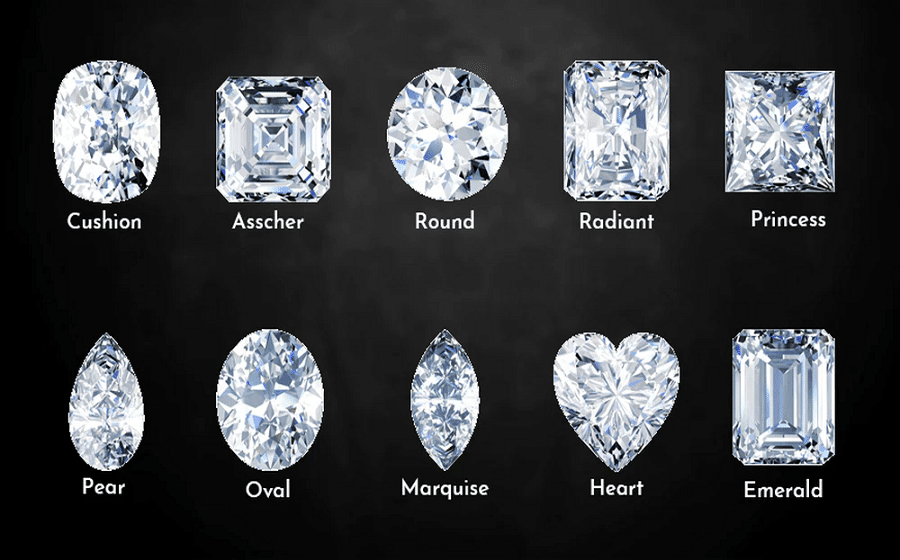
The shape is the measure of how a diamond looks from above. Shape affects the style and appearance of the diamond. There are many shapes used as a center stone for diamond rings:
- Princess
- Oval
- Round
- Pear
- Marquise
- Emerald
- Cushion
- Radiant
- Asscher
- Heart
The most popular shape is round because it has the most brilliance and versatility.
Fluorescence
Fluorescence measures how a diamond glows under ultraviolet light. Some diamonds have blue fluorescence, making them appear whiter or brighter. Other diamonds have yellow fluorescence, making them appear more yellow or dull. Fluorescence is considered a negative factor for colorless or near-colorless diamonds but a positive factor for lower-color or fancy-color diamonds.
Prices of 1-carat Diamonds with Different Shapes
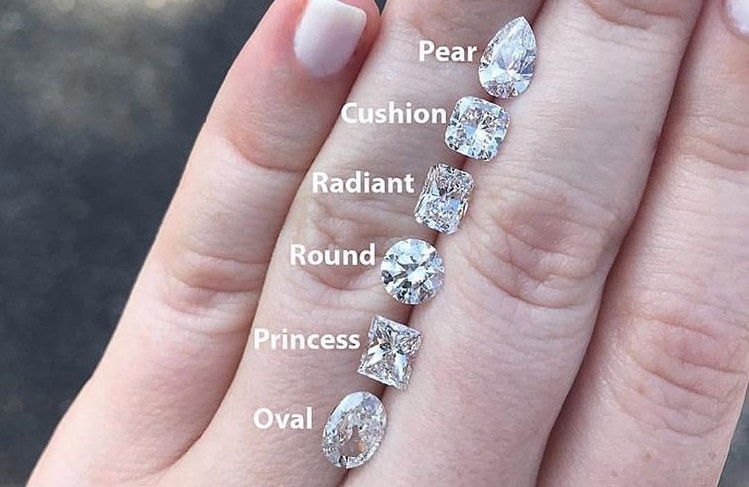
- Round – $3,110
- Princess – $2,430
- Cushion – $1,840
- Emerald – $2,090
- Oval – $1,850
- Radiant – $1,900
- Asscher – $2,470
- Marquise -$3,510
- Heart – $2,410
- Pear -$3,140
*In this selection, the diamonds all have a similar color of J-I.
It is rare to find a 1/10-carat diamond on sale. To estimate the value for this size, we can use the value for 1 carat to determine that of 1/10-carat. In the example above, the round shape value of $3,110 for 1 carat can be multiplied by 0.1 to get $311.
Diamond Certification
You don't just pick a diamond out of a hat. You want to ensure you get the best value for your money. That's why buying a certified diamond from a reputable lab like GIA (Gemological Institute of America) is important. A GIA certificate tells you exactly what you are getting and protects you from fraud and scams.
A certified diamond has a unique identification number that is laser-inscribed on the girdle, and it can be verified online at GIA's website. A certified diamond also has a detailed grading report describing its quality and characteristics. The report is like a diamond's passport, and it helps you compare different diamonds and make an informed choice.
Conclusion
The value of a 1/10-carat diamond depends on several factors, such as the stone's cut, color, clarity, and shape. Generally, a 1/10-carat diamond can range from $80 to $300, depending on the quality and rarity of the diamond. However, there are other things to consider when buying a diamond.
You should also look at the style, setting, and design of the jewelry that features the diamond, as well as your personal preference and budget. A 1/10-carat diamond can be a beautiful and affordable choice for an engagement ring, a pendant, a pair of earrings, or any other piece of jewelry that you want to sparkle and shine.

